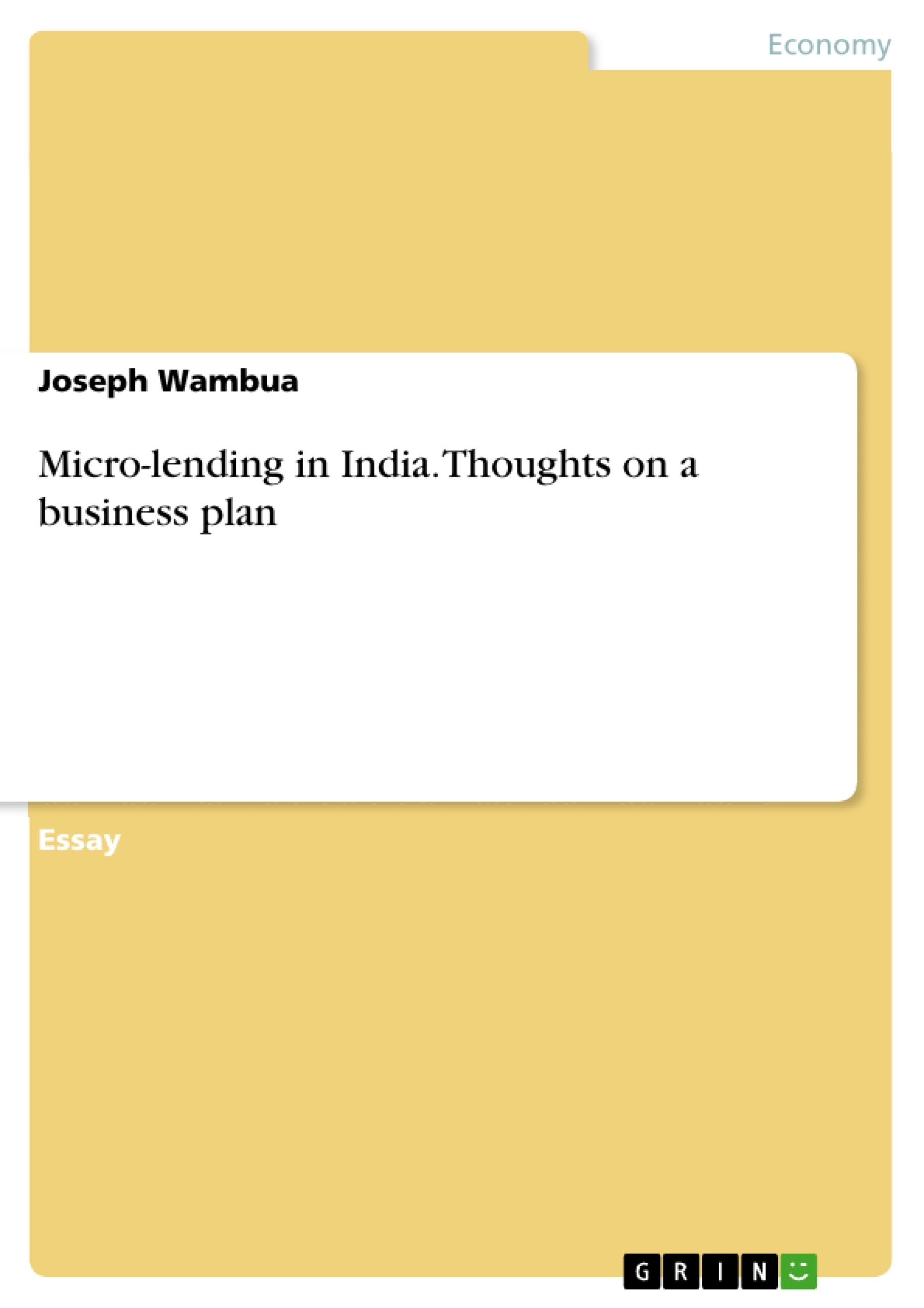This essay outlines the idea of a business plan for a micro lending business in India. To this end, the author examines several factors that may influence a business plan. These include the business idea itself, the business environment, feasibility and stakeholder issues as well as ethical and sustainability concerns.
Inhaltsverzeichnis (Table of Contents)
- Introduction
- Problem
- Business idea
- Business environment PESTLE
- Feasibility
- Stakeholders
Zielsetzung und Themenschwerpunkte (Objectives and Key Themes)
This business plan outlines the creation of a micro-lending business in India, targeting individuals living below the poverty line. The primary objective is to alleviate poverty by providing small loans and financial literacy training. Profit generation is a secondary goal.
- Poverty reduction in India
- Micro-lending as a financial inclusion strategy
- Impact of micro-finance on individual and community development
- Challenges and opportunities of micro-lending in a developing country
- Stakeholder engagement and social responsibility in business operations
Zusammenfassung der Kapitel (Chapter Summaries)
The introduction sets the stage for the business plan, emphasizing the importance of planning for success. The problem section highlights the prevalence of poverty in India, particularly in rural areas, and the need for financial assistance for low-income individuals.
The business idea section presents the concept of a micro-lending business as a solution to the problem of poverty. The plan focuses on providing small loans to individuals below the poverty line, with the aim of promoting financial empowerment and improving livelihoods.
The business environment PESTLE analysis explores the political, economic, social, technological, legal, and environmental factors that may influence the success of the micro-lending business. The analysis highlights the political stability of India, its large population, and the growing technology sector as favorable factors.
The feasibility section discusses the challenges and opportunities associated with establishing a micro-lending business in India. The section addresses the need for significant initial capital and the potential for competition from existing businesses. The plan outlines strategies for obtaining funding and managing competition.
The stakeholders section defines the key stakeholders involved in the micro-lending business, including potential clients, investors, and government agencies. The importance of understanding and managing stakeholder relationships is emphasized.
Schlüsselwörter (Keywords)
The key focus of this business plan is micro-lending, poverty reduction, financial inclusion, social impact, stakeholder engagement, and business feasibility in the context of India. The plan explores the potential of micro-lending as a tool for empowering individuals and communities, while navigating the challenges of operating in a developing country.
- Citation du texte
- Joseph Wambua (Auteur), 2014, Micro-lending in India. Thoughts on a business plan, Munich, GRIN Verlag, https://www.grin.com/document/307069



